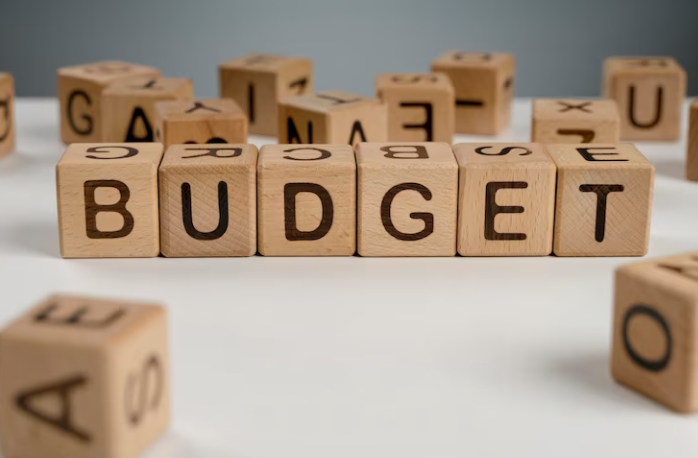In today’s fast-paced world, managing personal finances has become increasingly important. A key aspect of financial management is budgeting – the process of planning and allocating your income to meet your expenses and savings goals. In this blog, we will delve into the art of budgeting and provide you with practical tips on how to take control of your finances and save more. Let’s embark on the journey to financial well-being.
1. Introduction
Budgeting is the foundation of financial success. It allows you to make conscious decisions about your money and ensure that your income aligns with your financial goals. By creating a budget, you gain control over your finances and make informed choices about spending, saving, and investing.
2. What is a Budget?
A budget is a financial plan that outlines your income, expenses, and savings targets for a specific period. It provides a clear picture of your financial health and helps you allocate your resources effectively. A well-crafted budget ensures that you are not only meeting your immediate needs but also saving for the future.
3. Why is Budgeting Important?
Budgeting is crucial for several reasons:
- Financial Control: A budget helps you take control of your finances by providing a roadmap for managing your income and expenses.
- Achieving Goals: By setting savings targets and allocating funds towards specific goals, such as buying a house or taking a dream vacation, budgeting helps you achieve your aspirations.
- Identifying Problem Areas: A budget allows you to identify areas where you may be overspending or not allocating enough resources. It enables you to make adjustments and improve your financial habits.
- Reducing Debt: Budgeting helps you prioritize debt repayment by allocating funds towards clearing outstanding balances.
- Building Wealth: Through budgeting, you can allocate a portion of your income towards investments and savings, allowing your money to grow over time.
4. Steps to Create an Effective Budget
Creating an effective budget involves the following steps:
Step 1: Determine Your Income: Calculate your total income, including salaries, wages, freelance earnings, and any other sources of income.
Step 2: Identify Fixed Expenses: List your fixed expenses, such as rent/mortgage payments, utilities, insurance premiums, and loan repayments. These are expenses that remain relatively constant each month.
Step 3: Track Variable Expenses: Track your variable expenses, such as groceries, dining out, entertainment, and transportation. These expenses may vary from month to month.
Step 4: Set Savings Goals: Determine your savings goals and allocate a specific portion of your income towards savings. Aim to save at least 10-20% of your income.
Step 5: Allocate Funds: Allocate funds for different categories based on your income and priorities. Ensure that your expenses do not exceed your income.
5. Tracking Your Expenses
To successfully manage your budget, it’s important to track your expenses regularly. Use a budgeting app or a simple spreadsheet to record your expenditures. Review your spending patterns and identify areas where you can cut back or make adjustments to stay within your budget.
6. Prioritizing Savings
Saving should be a non-negotiable part of your budget. Prioritize saving by automating regular transfers to your savings account. Consider setting up an emergency fund to handle unexpected expenses and save for long-term goals, such as retirement or education.
7. Making Smart Spending Choices
When it comes to spending, make conscious decisions that align with your priorities and values. Differentiate between needs and wants, and avoid impulsive purchases. Look for ways to save money, such as shopping during sales, using coupons, or buying second-hand items.
8. Reviewing and Adjusting Your Budget
Regularly review your budget to ensure it remains effective. Life circumstances and financial goals may change over time, requiring adjustments to your budget. Evaluate your progress, make necessary modifications, and stay flexible in your approach.
9. Tools and Apps for Budgeting
Numerous tools and apps can assist you in budgeting effectively. Popular options include Mint, YNAB (You Need a Budget), and Personal Capital. These tools help you track your expenses, set savings goals, and monitor your financial health in real-time.
Conclusion
Budgeting is a powerful tool that empowers you to take control of your finances and achieve your financial goals. By creating a budget, tracking your expenses, money saving journal, prioritizing savings, and making smart spending choices, you can build a strong foundation for financial well-being. Start today and unlock the art of budgeting to secure a brighter financial future.
In conclusion, mastering the art of budgeting is key to taking control of your finances and saving more. By understanding the importance of budgeting, following the steps to create an effective budget, tracking your expenses, and making smart financial choices, you can achieve financial stability and work towards your long-term goals. Start implementing these budgeting strategies today and pave the way to a more secure financial future.

